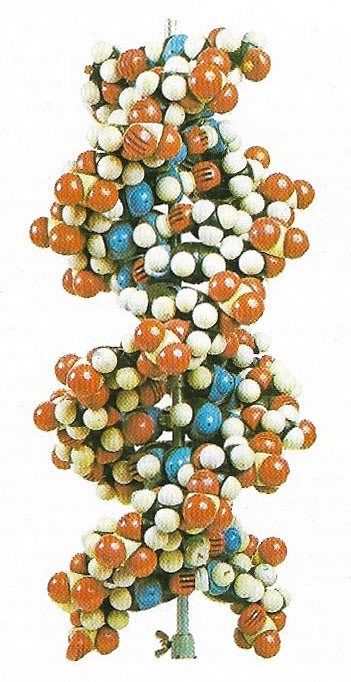helix

Figure 1. A circular helix (right) and cylindroconical helix (left). In each case the curve (red) makes a constant angle with the elements (e.g., the blue lines) in the surface on which it is draw.

Figure 2. DNA double helix.
A helix is a curve in three dimensions, the tangent to which makes a constant angle with a fixed line. A circular helix is formed by winding a line around a cylinder so the radius is always the same. A conical helix is formed by winding a line around a cone, so that, consequently, its radius constantly changes (Figure 1).
Springs often take the form of various kinds of helices. In nature, the DNA molecule is in the shape of a double helix.
Double helix
A double helix is the structural arrangement of DNA, which looks something like an immensely long ladder twisted into a helix, or coil. The sides of the "ladder" are formed by a backbone of sugar and phosphate molecules, and the "rungs" consist of nucleotide bases joined weakly in the middle by hydrogen bonds.
DNA forms a long molecular coil in our chromosomes. The chemical structure in the coiled DNA ladder encodes genetic instructions in the cells of every living organism. A model of the DNA strand (Figure 2) shows the characteristic winding of the double helix.
The structure of DNA was discovered in 1953 by James Watson and Francis Crick at Cambridge University and by Rosalind Franklin and Maurice Wilkins at the University o London. The significance of the work was recognized by the award of a joint Nobel Prize in 1962 from which, however, Franklin was omitted.

